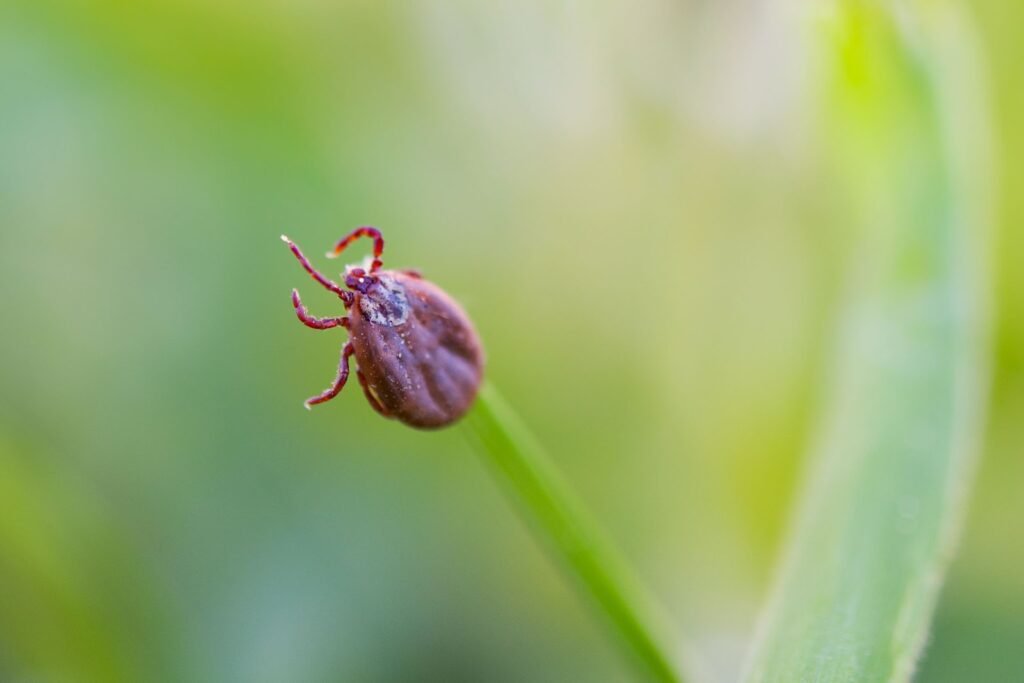Many people have heard of Lyme disease, but they’re unsure how it spreads. A common question is, “Is Lyme disease contagious?” In this blog, we’ll answer that in a clear, expert-informed way.
This information is for anyone concerned about contracting Lyme disease from a friend, relative, or pet.
What Is Lyme Disease?
Before addressing whether Lyme disease is contagious, let’s understand what it is.
Lyme disease is caused by a specific type of bacteria. This bacterium is transmitted through the bite of a black-legged tick (commonly called a deer tick), which is often found in grassy or forested areas.
Not all ticks carry Lyme disease, but some do. If an infected tick bites and remains attached to your skin for an extended period—typically 24 to 48 hours—it can transmit the bacteria that cause the disease.
What Happens When Someone Gets Lyme Disease?
Common symptoms include:
- A red, bullseye-shaped rash
- Fever or chills
- Fatigue
- Headache
- Muscle or joint pain
If left untreated, Lyme disease may lead to more severe complications such as neurological symptoms or long-term joint issues. That’s why it’s important to consult a medical professional if you suspect a tick bite or symptoms associated with Lyme disease.
So, Is Lyme Disease Contagious?
The short answer is no—Lyme disease is not contagious.
You cannot catch Lyme disease from:
- Hugging or kissing someone with Lyme disease
- Sharing food, drinks, or utensils
- Being near someone who coughs or sneezes
- Attending school or work with someone who has the condition
This concern is common among families, but there is no risk of transmission through casual or close human contact.
How Do People Get Lyme Disease?
Lyme disease is transmitted through a specific process:
- Exposure to wooded or grassy environments
- A tick attaches to the body
- The tick remains attached for at least 24 to 48 hours
- The bacteria are transmitted into the bloodstream
This is the only known method of transmission—it cannot spread from person to person.
Can You Get It from Pets?
Another common concern is: “Is Lyme disease contagious from pets?”
Here’s what experts know:
- Pets like dogs and cats can contract Lyme disease from tick bites
- However, they cannot transmit the disease to humans through contact
- Petting, hugging, or sleeping near your pet does not pose a risk
That said, it’s crucial to check pets regularly for ticks, especially after spending time outdoors, as ticks can transfer from pets to humans.
What About Blood, Pregnancy, or Breastfeeding?
Some wonder whether Lyme disease can be spread through:
- Blood transfusions
- Pregnancy or childbirth
- Breastfeeding
Here’s what current research indicates:
- There is no proven evidence of Lyme disease being transmitted through blood, pregnancy, or breastfeeding
- Blood donation centers often exclude individuals with Lyme disease as a precaution
- Medical experts currently do not classify Lyme disease as transmissible through these routes
So, for those asking, “Is Lyme disease contagious?”—in these scenarios, the answer remains no.
Complementary and Alternative Treatments for Lyme Disease
Lyme disease, caused by Borrelia burgdorferi, is usually treated with antibiotics. However, individuals with lingering symptoms or chronic Lyme often seek complementary and alternative medicine (CAM) to support recovery and improve quality of life.
Here are evidence-informed and commonly explored CAM options:
1. Herbal Protocols
Stephen Buhner Protocol
Utilizes herbs such as Japanese knotweed, cat’s claw, and andrographis to reduce inflammation and bacterial load.
Cowden Protocol
Combines herbal tinctures with detoxification support to address microbial imbalances.
Note: Always consult a licensed healthcare provider before beginning any herbal regimen.
2. Nutritional Therapy
A nutrient-dense, anti-inflammatory diet may strengthen immune response and reduce symptoms:
- Recommended foods: Whole foods, omega-3s, leafy greens, berries, and fermented products
- To limit or avoid: Sugar, gluten, dairy, and processed foods
Supplementation with vitamin D, magnesium, B-complex, and probiotics is often used to restore balance during or after antibiotic treatment.
3. Hyperbaric Oxygen Therapy (HBOT)
HBOT involves inhaling pure oxygen in a high-pressure chamber. This may enhance tissue oxygenation, which could inhibit Lyme bacteria. While some patients report symptom relief, clinical validation is still evolving.
4. Acupuncture
Acupuncture can:
- Stimulate natural healing
- Ease neurological symptoms such as brain fog
- Reduce chronic fatigue and joint pain
It is frequently used as part of integrated pain and symptom management.
5. Detoxification Therapies
To mitigate Herxheimer reactions (temporary worsening of symptoms due to bacterial die-off), individuals often turn to:
- Infrared sauna sessions
- Epsom salt baths
- Liver-supportive supplements (e.g., milk thistle, NAC)
6. Mind-Body Practices
Chronic illness can affect mental and emotional health. Practices like:
- Meditation and breathwork
- Cognitive Behavioral Therapy (CBT)
- Yoga and tai chi
…can help regulate stress, improve sleep, and support holistic recovery.
7. Homeopathy
Although controversial, some individuals explore homeopathic remedies tailored to their symptom profile. Results vary, and clinical evidence is limited. It should be pursued under the guidance of a trained professional.
Final Takeaway: Is Lyme Disease Contagious?
No—Lyme disease is not contagious through human or pet contact, nor through casual interaction. It is transmitted only via infected tick bites.
By understanding the true pathways of transmission and exploring supportive therapies, individuals can make informed choices about prevention and care. Always discuss treatment plans with a qualified healthcare provider, especially when combining conventional and alternative approaches.
Why Do People Get Confused?

It’s understandable why people often ask, “Is Lyme disease contagious?”
Because early Lyme disease can mimic the flu—with symptoms like fatigue, fever, and body aches—some may assume it spreads like a cold or virus. However, this is a misconception.
Lyme disease is not airborne, and it does not spread through:
- Sharing a bed
- Physical contact such as hugging or kissing
- Breathing the same air
- Sharing food or utensils
The only proven method of transmission is through the bite of an infected black-legged tick.
How to Protect Yourself
While the answer to “is Lyme disease contagious?” is clearly no, tick prevention remains essential. Here are evidence-based ways to stay safe:
- Wear long sleeves and pants in wooded or grassy areas
- Use EPA-approved insect repellent that deters ticks
- Perform a full-body tick check after spending time outdoors
- Shower within two hours of returning indoors
- Inspect pets regularly—especially around ears, neck, and paws
If you find a tick, use fine-tipped tweezers to remove it promptly. The sooner the tick is removed, the lower the risk of contracting Lyme disease.
What to Do If You Suspect Lyme Disease
If you believe you’ve been bitten by a tick and are experiencing symptoms, it’s important to consult a healthcare provider promptly. They may:
- Prescribe antibiotics, which are most effective when started early
- Order a blood test, though results are not always immediately conclusive in the early stages
- Make a diagnosis based on your clinical history, including recent outdoor exposure and the appearance of symptoms such as a bullseye rash or flu-like illness
Early treatment typically leads to full recovery for most patients.
Final Word: Is Lyme Disease Contagious?
Let’s summarize:
✅ No — Lyme disease is not contagious
❌ You cannot catch it through touching, kissing, sharing food, or close contact
✅ It is transmitted only through the bite of an infected tick
So, if someone you care about has Lyme disease, there is no need for isolation. Instead, focus on offering support, encouraging proper medical care, and helping them rest and recover.
Conclusion: You Can Feel Better with Lyme Disease
Lyme Disease can make life feel confusing, exhausting, and painful. But healing is possible. By feeding your body right, calming your stress, and getting the right support, you can start feeling like yourself again.
And you don’t have to do it alone.
Lola, a caring provider at Kairos Health and Wellness, is here to guide you. She’s a Board-Certified Nurse Practitioner with advanced training in functional medicine and natural healing. Lola takes the time to listen, understand your story, and build a plan that works for you.
Ready to feel better after Lyme Disease? Book a visit with Lola and start your healing journey today.


